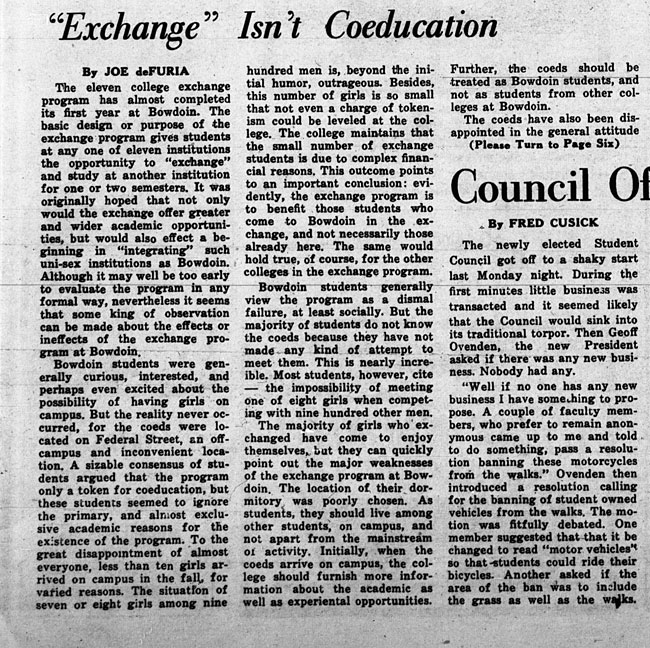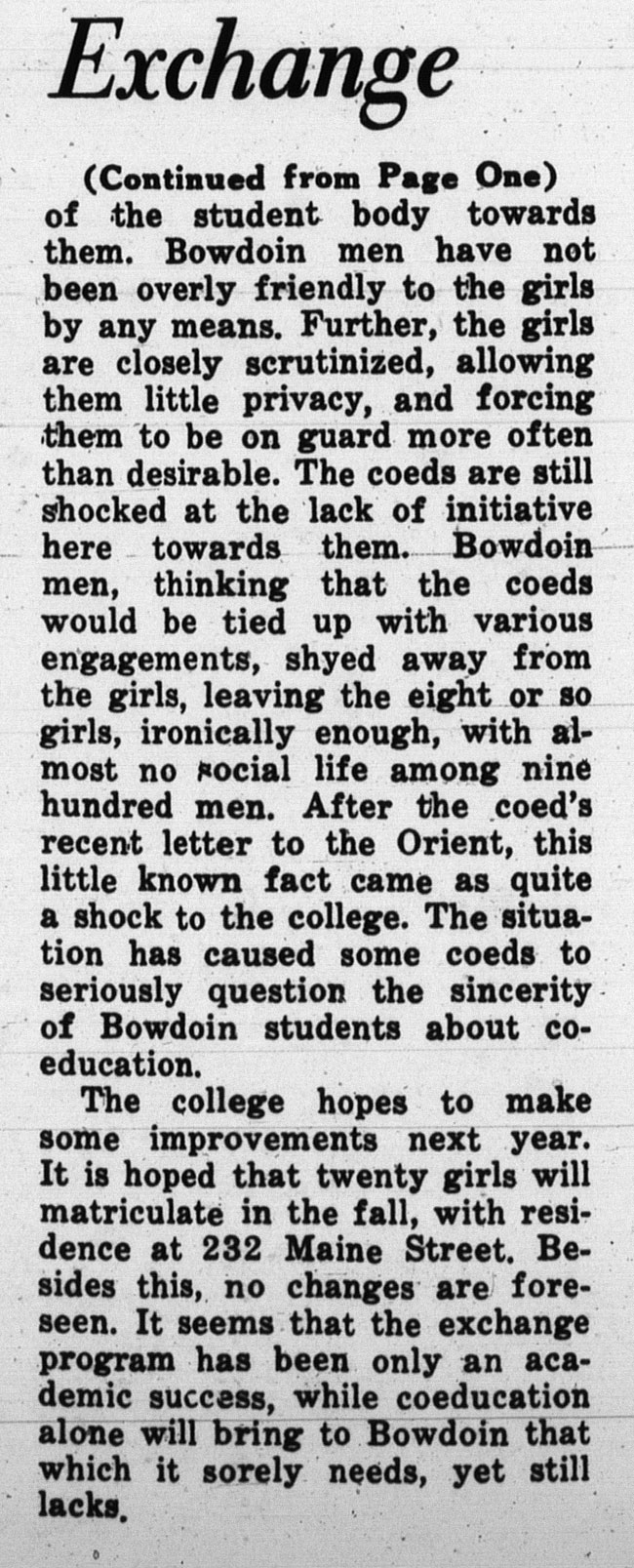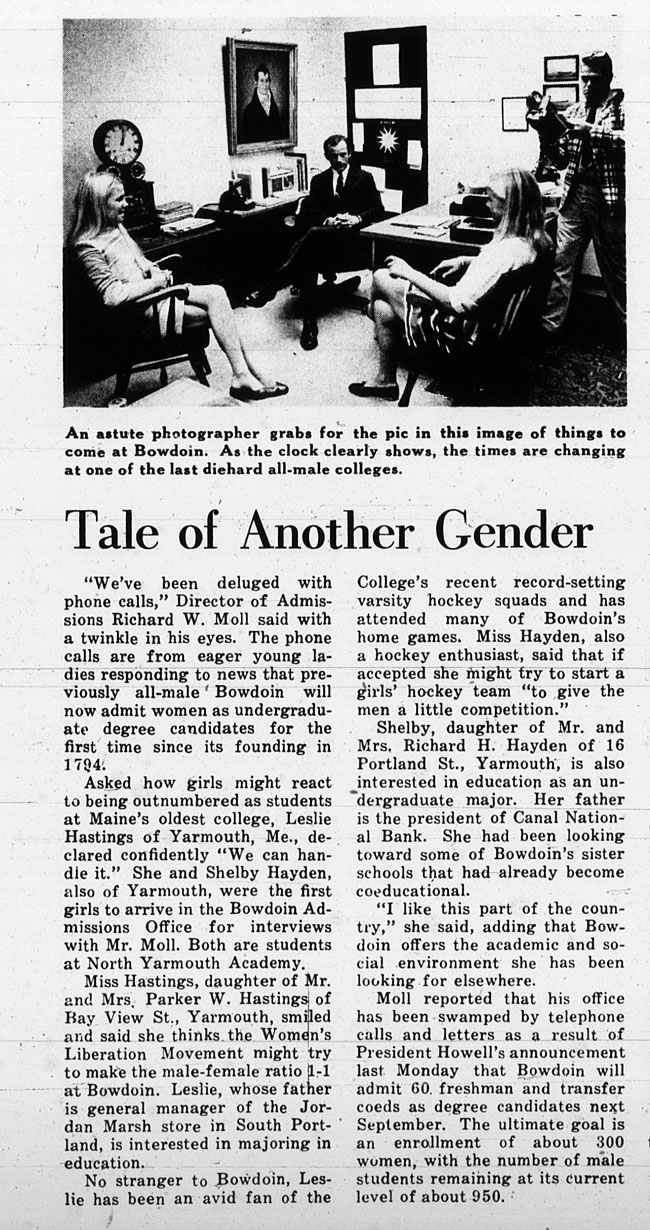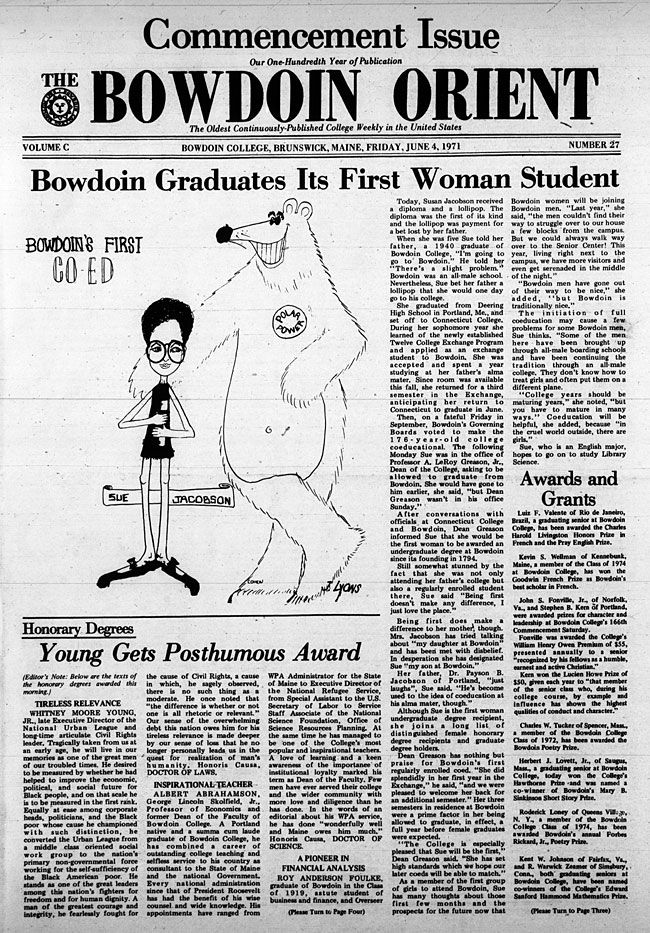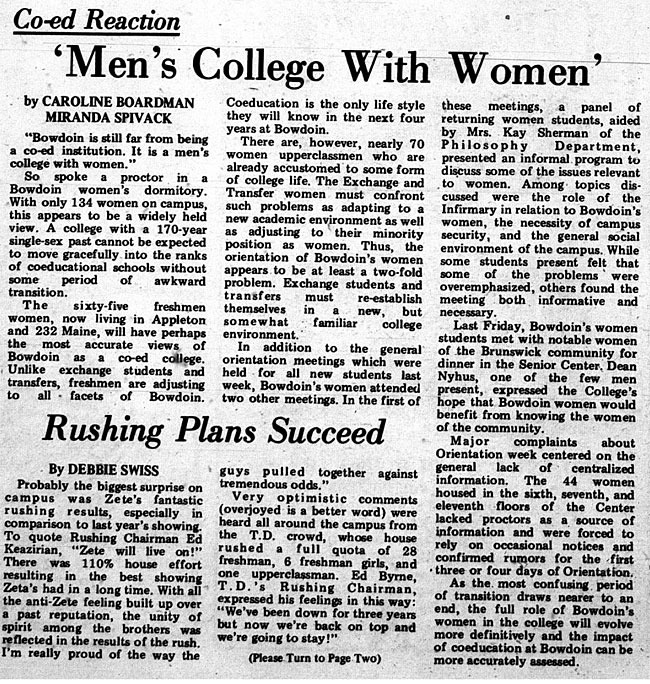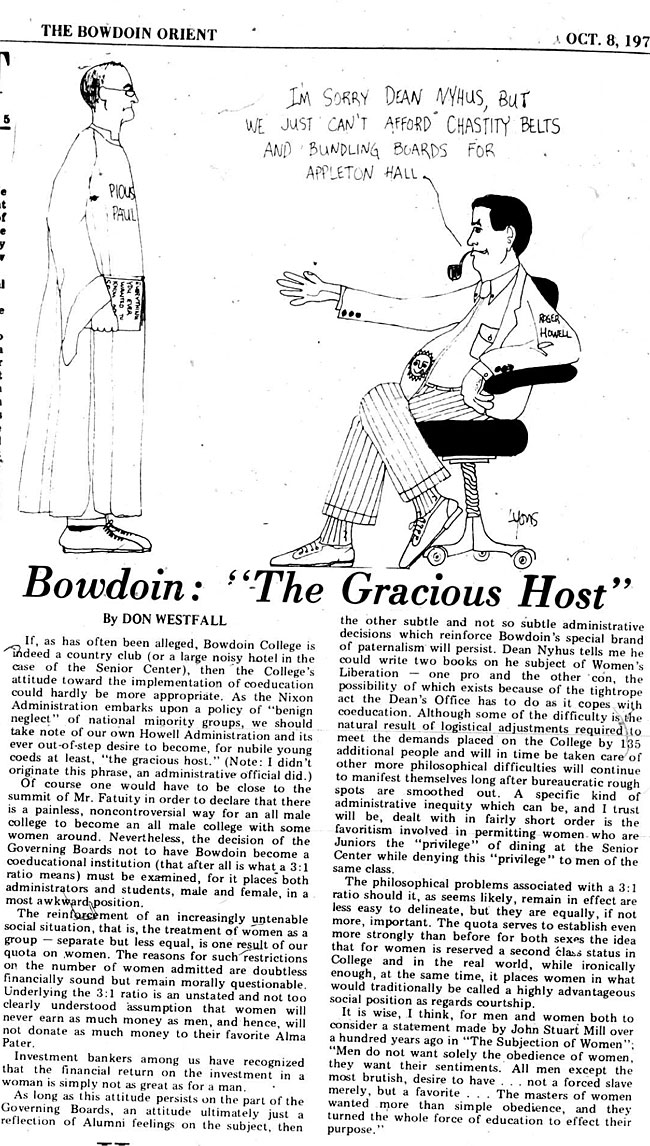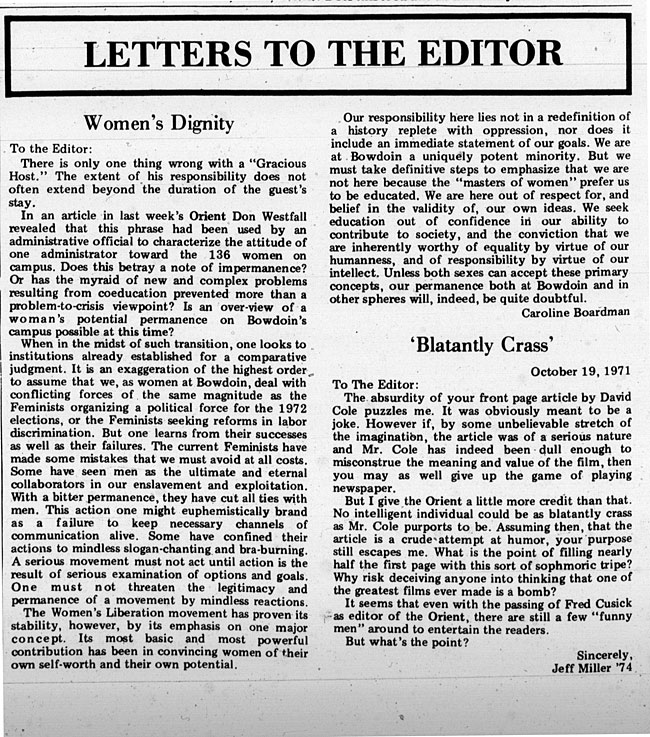The Bowdoin Orient – Committee on Coeducation Report
The Bowdoin Committee on Coeducation launched the first draft of its report in the spring of 1970, presenting its goals for admitting women to Bowdoin over the subsequent years (Document SC, 13). Bowdoin became coeducational in 1971, as proposed by the Committee. Not everyone agreed this was the best time to pursue coeducation, however. For example, Dick Moll, Director of Admissions, thought it would be better for the college if women were admitted in 1972. The Committee decided that the advantages of coeducation overshadowed delaying the decision for a year.
The Committee acknowledged the changes that would have to be made at the College. They laid out a plan for the ideal number of women to be enrolled each year. In 1971, they planned on thirty “freshmen” (Bowdoin now calls all incoming students “first-years”) and thirty transfer students. They would do the same in 1972, effectively doubling the enrollment of women. They proposed to admit sixty first-years and thirty transfer students for the following year. By 1976, the goal was to enroll three men for every woman.
The Committee also took into consideration the potential majors women might claim. They predicted an increase in the number of humanities majors. They also anticipated the creation of Spanish as a major and classes offered in sociology, anthropology, and child psychology. These are all offered at the College today. They noted that with an increase of classes and students there would be a higher teacher to student ratio, but also that the faculty would eventually increase. Today Bowdoin has a nine to one student to teacher ratio and a student body that is forty- seven percent male and fifty three percent female. Bowdoin has more than reached gender parity in its admissions process.
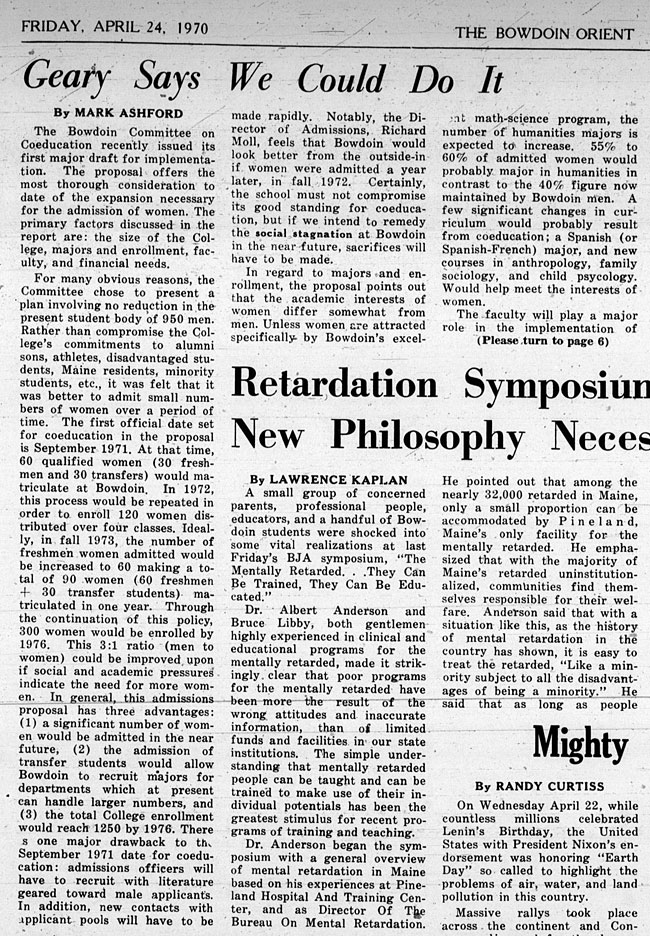
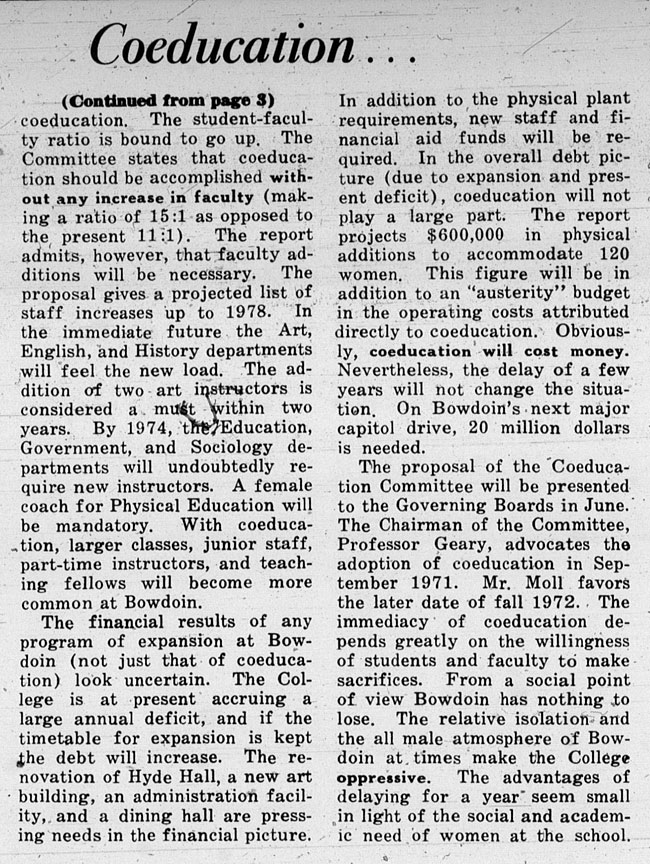
SC13
